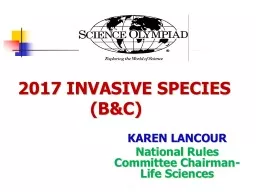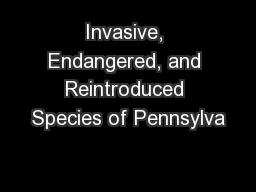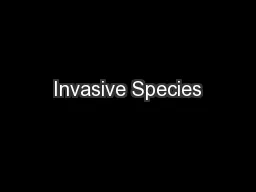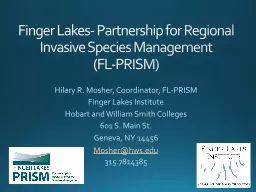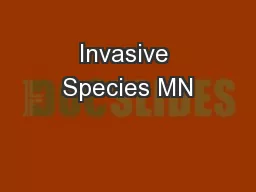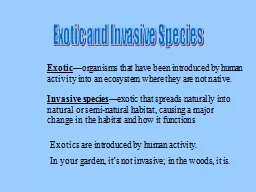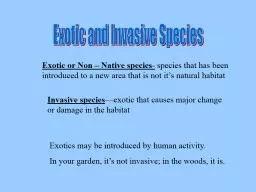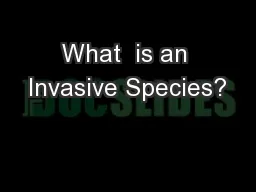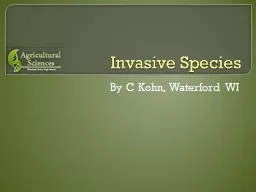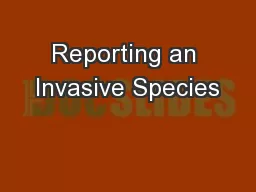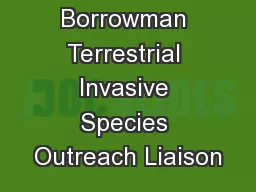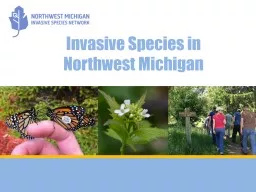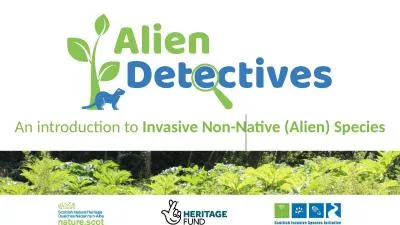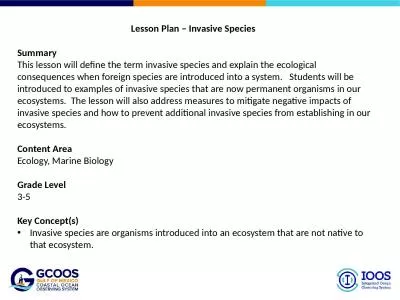PPT-2017 INVASIVE SPECIES (B&C)
Author : cheryl-pisano | Published Date : 2019-02-14
KAREN LANCOUR National Rules Committee Chairman Life Sciences Event Rules 2017 DISCLAIMER This presentation was prepared using draft rules There may be some
Presentation Embed Code
Download Presentation
Download Presentation The PPT/PDF document "2017 INVASIVE SPECIES (B&C)" is the property of its rightful owner. Permission is granted to download and print the materials on this website for personal, non-commercial use only, and to display it on your personal computer provided you do not modify the materials and that you retain all copyright notices contained in the materials. By downloading content from our website, you accept the terms of this agreement.
2017 INVASIVE SPECIES (B&C): Transcript
Download Rules Of Document
"2017 INVASIVE SPECIES (B&C)"The content belongs to its owner. You may download and print it for personal use, without modification, and keep all copyright notices. By downloading, you agree to these terms.
Related Documents

